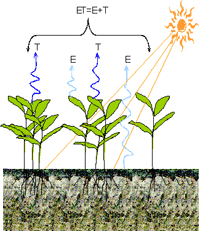Agricultural Research Division of IANR

West Central Research and Extension Center, North Platte
Date of this Version
2014
Citation
J. Anim. Sci. 2014.92:4733–4740
Abstract
Understanding the biology of heifer maturity and its relationship to calving difficulty and subsequent breeding success is a vital step in building a bioeconomic model to identify optimal production and profitability. A limited dependent variable probit model is used to quantify the responses among heifer maturities, measured by a maturity index (MI), on dystocia and second pregnancy. The MI account for heifer age, birth BW, prebreeding BW, nutrition level, and dam size and age and is found to be inversely related to dystocia occurrence. On average there is a 2.2% increase in the probability of dystocia with every 1 point drop in the MI between the MI scores of 50 and 70. Statistically, MI does not directly alter second pregnancy rate; however, dystocia does. The presence of dystocia reduced second pregnancy rates by 10.67%. Using the probability of dystocia predicted from the MI in the sample, it is found that on average, every 1 point increase in MI added 0.62% to the probability of the occurrence of second pregnancy over the range represented by the data. Relationships among MI, dystocia, and second pregnancy are nonlinear and exhibit diminishing marginal effects. These relationships indicate optimal production and profitability occur at varying maturities, which are altered by animal type, economic environment, production system, and management regime. With these captured relationships, any single group of heifers may be ranked by profitability given their physical characteristics and the applicable production, management, and economic conditions.


Comments
© 2014 American Society of Animal Science.
doi:10.2527/jas2014-8010